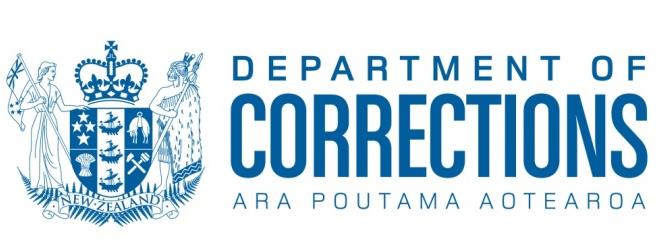
16 December 2021
C142202
Courtney Shannon
[FYI request #16999 email] Tēnā koe Courtney
Thank you for your email of 1 October 2021 to the Department of Corrections – Ara
Poutama Aotearoa (Corrections), requesting the following information:
1) How many instances of temporary release from prison “to assist in the
prisoner’s rehabilitation” (see here:
https://www.corrections.govt.nz/working_with_offenders/prison_sentences/rel
ease/home_visits) have occurred, per week, since January 1, 2019? Please
break this down by prison and provide me with the information in an excel
spreadsheet.
2) How many scheduled temporary releases from prison have been cancelled
or postponed during Level 3 and 4 lockdowns? Please break this down by
prison and provide me with the information in an excel spreadsheet.
Your request has been considered under the Official Information Act 1982 (OIA). I
apologise for the delay in responding and thank you for your patience.
Corrections is committed to providing the people we manage with the skills and
experiences needed to safely reintegrate after release from prison and go on to lead
pro-social lives. Temporary release is the release of a person from the custody of
Corrections who is still serving a prison sentence. It is primarily a tool to be used to
support and enable the person’s reintegration into the community when they are
released. During a temporary release, the person is supervised by an approved
sponsor such as their employer if taking part in Release to Work or a case manager
or reintegration service provider for Guided Release. Temporary release is only
available to people who have been sentenced and meet eligibility and suitability
criteria.
The safety of the public is a foremost priority when considering a temporary release.
Every application for temporary release is assessed by a multi-disciplinary panel
made up of case managers, psychologists, and probation, custodial and intelligence
staff. The panel can also include external representatives from the community, such
as the New Zealand Police. These panels consider the risk to the public and the
benefit to the individual in prison. A recommendation is then provided to the decision
maker to allow them to make an informed decision about approving the individual’s
NATIONAL OFFICE, WELLINGTON
Mayfair House, 44 – 52 The Terrace, Wellington, 6011, Private Box 1206, Wellington 6140,
Phone +64 4 460 3000
www.corrections.govt.nz
2
participation, and any conditions that they should comply with, including GPS
monitoring.
More information about temporary release is available on Corrections’ website, at:
https://www.corrections.govt.nz/resources/policy_and_legislation/Prison-Operations-
Manual/Movement/M.04-External-movement-transportation-of-prisoners/M.04.06-
Temporary-release All the reasons for temporary release are available at the link above, but for the
purpose of question one of your request, we have only considered reasons where a
person has been released in order to:
• Participate in Guided Release
• Have a tattoo removed (including pre- and post-procedure assessments)
• Attend a community facility for educational, cultural, or recreational purposes
• Attend a programme at an approved agency for assessment or treatment of
the person’s rehabilitative or re-integration needs
• Attend a religious service or activity
• Be involved in a community project or other reintegrative activity in
association with a community organisation
• Engage with an agency or person that will support the person on release
• Purchase clothing, equipment or possessions which is reasonably required
before the person’s release
• Seek vocational training, paid or self-employment.
Alongside temporary release, every year we carry out tens of thousands of escorts
between prisons, courts, medical facilities, tangi or funerals and rehabilitation
providers as a temporary removal. These escorts, where people are actively
supervised and monitored by custodial staff, are managed in accordance with
temporary removal policy which is distinct from temporary release policy and is also
available on Corrections’ website at:
https://www.corrections.govt.nz/resources/policy_and_legislation/Prison-Operations-
Manual/Movement/M.04-External-movement-transportation-of-prisoners/M.04.05-
Temporary-removals For the purposes of answering your request, we are releasing data relating to
temporary release only.
Attached as Appendix One is an excel spreadsheet of all temporary releases from 31
December 2018, broken down by week and prison. You have requested all data from
1 January 2019, but since that was a Tuesday, the first date of the data is from 31
December 2018 and goes through the week beginning on 27 September 2021.
In the data attached, each person who was granted a temporary release is counted
every time they left a prison. For example, if a person participated in a release to
work programme where they go to paid employment five days a week, they would be
counted five times for that week.
While almost all prisons have some level of temporary release, Mt Eden Corrections
Facility has no temporary releases that fall under the category of “assisting in a

3
prisoner’s rehabilitation.” This is because it is a remand prison and only people that
are sentenced are eligible for the programmes and reasons listed above.
Some prisons have robust release to work programmes or have more external
partners that facilitate programmes for those in prison. This includes Hawke’s Bay
Regional Prison that has a higher than average number of temporary releases each
week due to their release-to-work programme and their Māori Pathways programme.
Each prison differs in their operational needs, the security classifications of people in
the prison, and the ability to facilitate temporary release programmes.
For question two, it is very difficult for us to extract data on how many temporary
releases were cancelled during the Alert Level 3 and 4 lockdowns. Frontline staff
were diverted to urgent critical tasks during the lockdown period, which has meant
most cancelled temporary releases were not recorded during this period.
Accordingly, we unfortunately do not have accurate data available. The data from the
lockdown period on the attached spreadsheet should not be considered fully
accurate as there will be cases during this period that were cancelled but are still
included in the totals provided.
To accurately pull this data, we would be required to manually search through
hundreds of individual files, which would impair the effective administration of the
organisation. Therefore, this part of your request is refused under section 18(f), as
the information cannot be made available without substantial collation or research.
Under section 18A of the OIA, we have also considered whether fixing a charge or
extending the time limit would enable us to respond to this request. However, we do
not believe it would be a good use of our publicly funded resources in this case.
I encourage you to raise any concerns about this response with Corrections.
Alternatively, you are advised of your right to also raise any concerns with the Office
of the Ombudsman. Contact details are: Office of the Ombudsman, PO Box 10152,
Wellington 6143.
I trust the information provided is of assistance.
Ngā mihi
Rachel Leota
National Commissioner

